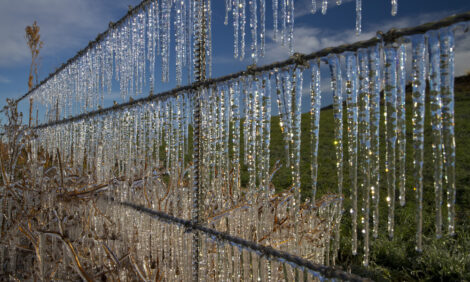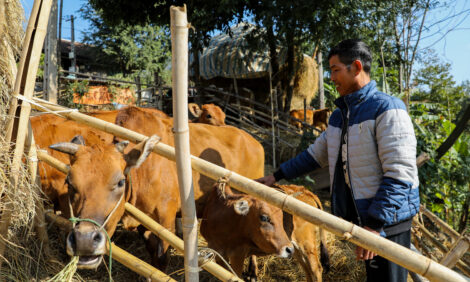



Heat Stress’s Reproductive Ramifications
Animal agriculture loses around $2 billion a year due to heat stress. History has taught us that heat stress does not have to last a long period of time to have a profound impact on production, writes Kalyn Bischoff from South Dakota University Extension.
A publication by Dr. T. R. Bilby reminds us that in 1999 Nebraska producers lost more than $20 million in cattle deaths and performance losses and that in just two days in July of 1995 a combination of heat and humidity caused the deaths of over 3,700 cattle in a thirteen county area of western Iowa. These economic losses were a result of heat stress reducing such things as milk production, heifer growth, increasing cow and calf mortalities, health-care costs, and reductions in reproductive performance.
Reproduction is the main factor limiting production efficiency in the cow/calf industry. Infertile females can be categorized into three groups: females that fail to become pregnant, become pregnant but fail to calve, or become pregnant late in the breeding season and fall out of the annual production cycle. At an 85% pregnancy rate each exposed female that fails to become pregnant cost the producer an estimated $94. In addition for each 1% deviation from an 85% pregnancy rate, a $6.25 increase or reduction in that value is seen (ex: 84% = $100.25 and 86% = $87.75).
In a time of drought, many factors compound the impact of infertility within a herd. Heat stress is an issue that has been recognized within the dairy industry for decades, but is often overlooked in the beef industry, until a time of drought. The impact of heat stress can be seen in males and females, and without proper management could have devastating reproductive ramifications.
Bulls
While most people consider the impact of heat stress on female fertility, the impact of heat stress in our bull herd during the breeding season should also be taken into account. Semen quality is shown to decrease when bulls are exposed to ambient temperatures of 86°F for 5 weeks or 100°F for 2 weeks. This is seen with a decrease in sperm concentrations, motility, and an increase in abnormal sperm cells in each ejaculate. Following a period of heat stress sperm quality does not return to normal for approximately 2 months.
Cows and Heifers
Following a summer of heat stress and drought it is likely that producers will see a reduction in reproductive performance. Overcoming a low plane of nutrition due to drought stricken pastures is compounded by heat stress, causing a reduction in fertility. The effects of heat stress can be seen throughout all stages of the pregnancy but are most prevalent early in gestation.
Heat stress will reduce the quality of oocytes (eggs) available for fertilization, resulting in a reduction in conception rates. Embryos of heat stressed cows have reduced developmental competence in early stages, but heat stress can also have a major impact on embryo growth up to 17 days. Pregnancy is recognized by the females on day 18 of her 21 day estrous cycle. Thus, with a reduction in embryo growth, the maternal recognition of the pregnancy may be compromised. In addition, the uterine environment is compromised due to redirection of blood flow, away from the core of the body, as a cooling mechanism. This also contributes to early abortions. In addition, heat stress will reduce the dominance of ovulatory follicles and can cause an increase in twinning during the subsequent calving season.
With heat stress causing a reduction in embryo quality and oocyte competence, in addition to a reduction in semen quality and viability, producers are likely to see a reduction in reproductive performance following a summer of record temperatures and extreme drought. Providing shade, cool clean water, and increasing the bull to cow ratio may be management practices that should be considered when cattle are experiencing heat stress.
September 2012


